
The digestive system is a kind of processing plant inside the body. It takes in food and pushes it through organs and structures where the processing happens. The fuels and nutrients we need are extracted, and the digestive system discards the rest.
Read on for 10 important facts about the digestive system.
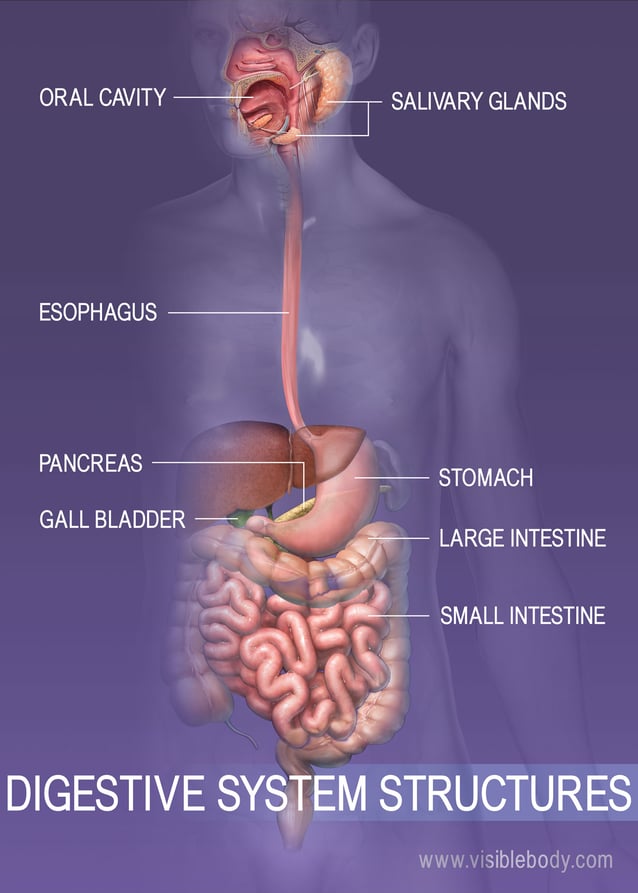
The digestive system includes structures that form the alimentary canal and the accessory organs of digestion. Digestion breaks down large compounds in food and liquids into smaller molecules that can be absorbed into the bloodstream. The absorbed nutrients include carbohydrates, protein, fats, minerals, and vitamins. They are processed, then delivered throughout the body and used for energy, growth, and cell repair.
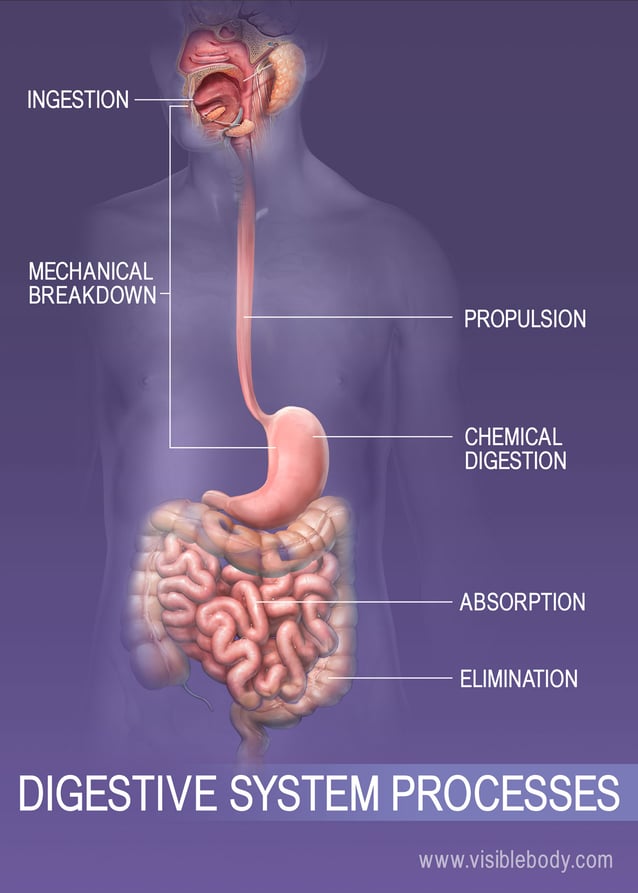
The six major activities of the digestive system are ingestion, propulsion, mechanical breakdown, chemical digestion, absorption, and elimination. First, food is ingested, chewed, and swallowed. Next, muscular contractions propel it through the alimentary canal and physically break it down into tiny particles. Digestive fluids chemically break down the nutrients from food into molecules small enough for absorption. Finally, indigestible substances are eliminated as waste.
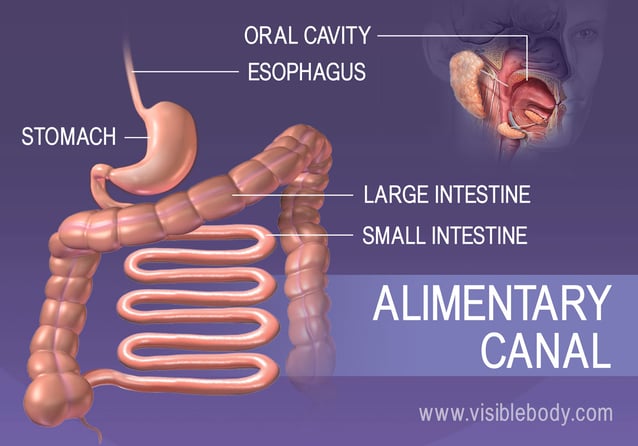
The alimentary canal is a single continuous tube that includes the oral cavity, pharynx, esophagus, stomach, and intestines. It is also called the digestive tract or the gastrointestinal (GI) tract and forms the physical pathway of digestion. Food enters the mouth and is pushed down the esophagus, into the stomach, and through the intestines. These structures gradually break down food into molecules that are small enough for absorption and expel the remainder as waste.
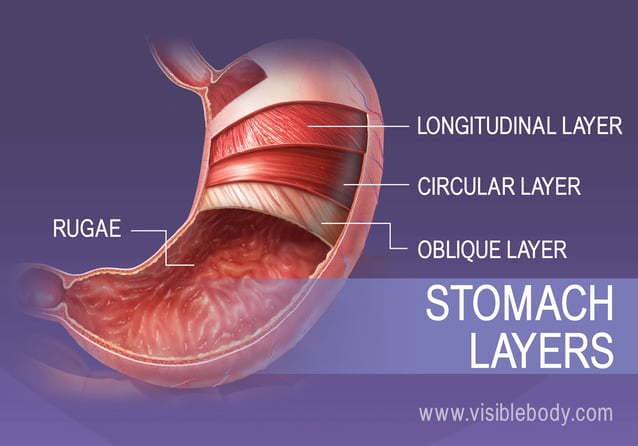
The stomach is divided into four regions: the cardia, fundus, body, and pylorus. It has three muscle layers. The longitudinal and circular layers are found throughout the alimentary canal and move food along using peristaltic contractions. The third, oblique, layer in the stomach churns food to break it down. When all three stomach layers are in motion, the two openings (sphincters) are closed to keep food in the stomach. The stomach wall also includes rugae, which are folds that allow the stomach to expand as food enters.
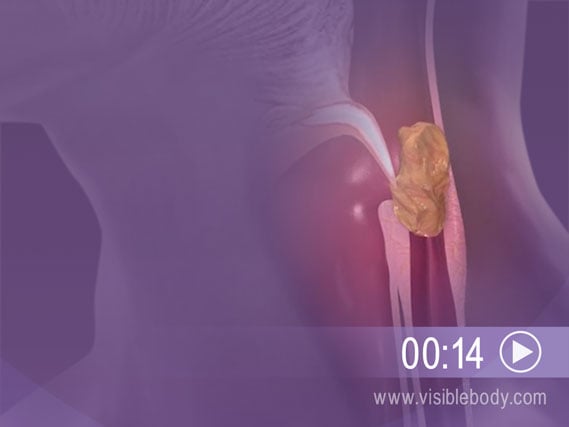
The autonomic nervous system controls peristalsis, the contraction and relaxation of muscle layers within the alimentary canal wall. Peristalsis is a key function in digestion; it literally gets the ball rolling. These involuntary contractions push swallowed food down the esophagus, churn the stomach, and propel chyme through the small intestine and large intestine.
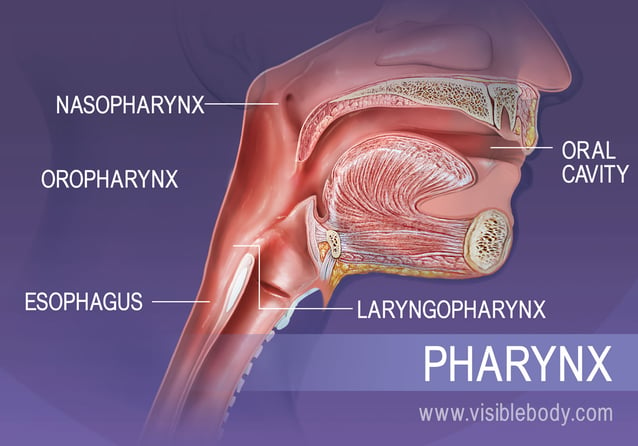
The pharynx, or throat, plays a dual role. It is a common passageway for air entering the respiratory system and for food and fluids entering the digestive system. When food is chewed into a bolus and swallowed, it moves from the mouth to the oropharynx and then down to the laryngopharynx. The laryngopharynx is a crossroad where the upper respiratory and upper digestive tracts diverge. The rear of the laryngopharynx merges with the esophagus to continue the digestive tract.
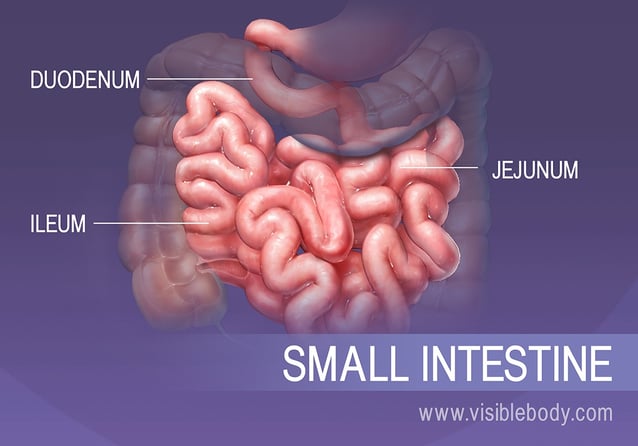
The small intestine has three regions: the duodenum, the jejunum, and the ileum. The duodenum is the uppermost part of the small intestine and only 10–15 inches long. During digestion it receives chyme from the stomach and bile, enzymes, and other digestive fluids from the liver and the pancreas. The jejunum is the middle portion of the small intestine (about 2.5 m long and 4 cm wide). The ileum is the lower segment and the longest of the three (about 3.5 m long). Finger-like projections called villi line the interior wall throughout the small intestine. The villi absorb most of the nutrients broken down by the digestive fluids.
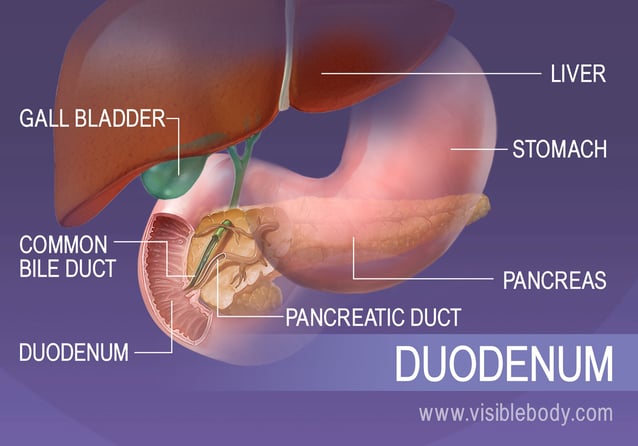
Ducts from the pancreas, gall bladder, and liver empty pancreatic juice, bile, and other digestive fluids into the duodenum. The duodenum is the uppermost part of the small intestine, so it receives chyme from the stomach. This is where most chemical digestion occurs and where the absorption of vital nutrients, vitamins, and minerals begins.
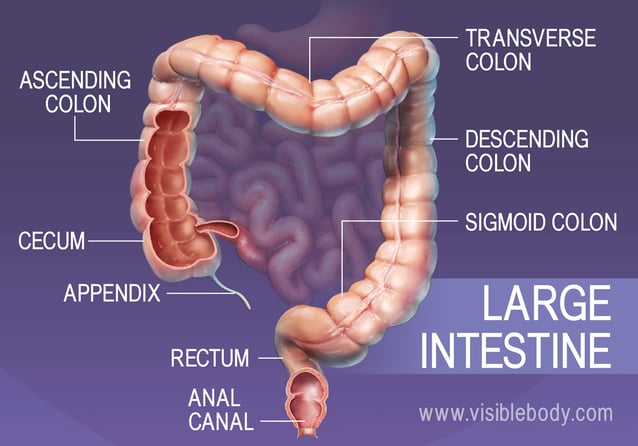
The regions of the large intestine are the appendix, cecum, ascending colon, transverse colon, descending colon, sigmoid colon, rectum, and anal canal. The large intestine absorbs water, electrolytes, and vitamins that remain after chyme is passed from the small intestine. It compacts and temporarily stores feces for defecation.
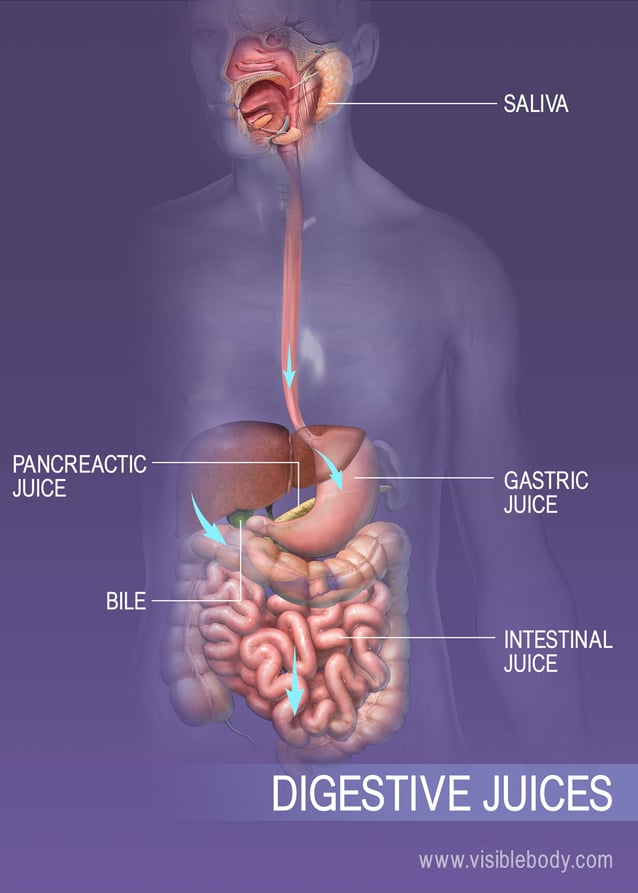
As food moves through the digestive tract, it is broken down chemically by a variety of digestive juices secreted by organs of the digestive system. Salivary glands secrete saliva that begins chemical digestion in the oral cavity. Gastric juice produced by glands in the stomach lining digest food into chyme. Bile contains bile salts that emulsify fats. Pancreatic juice contains enzymes and ions that aid digestion in the small intestine and buffers that neutralize stomach acids. Glands in the intestinal wall secrete intestinal enzymes that further break down chyme.
A description of the organs of digestion from the 1918 edition of Gray's Anatomy of the Human Body.
“Your Digestive System and How it Works” from the National Institute of Diabetes and Digestive and Kidney Diseases.
Visible Body Web Suite provides in-depth coverage of each body system in a guided, visually stunning presentation.
When you select "Subscribe" you will start receiving our email newsletter. Use the links at the bottom of any email to manage the type of emails you receive or to unsubscribe. See our privacy policy for additional details.